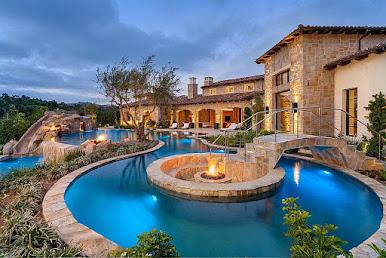Ensuring Pool Barrier Safety and Compliant Pool and Spa Safety Measures
Introduction: When it comes to pool safety, there is no room for compromise. Swimming pools and spas are a great source of joy and relaxation, but they also pose potential risks, especially for young children. In this blog post, we will discuss the importance of pool barrier safety, swimming pool and spa safety, and the necessary compliance measures to ensure a safe and secure environment for everyone.
Pool Barrier Safety: One of the key elements of pool safety is a well-designed and properly installed pool barrier. A pool barrier serves as a physical barrier between the pool area and the surrounding environment, preventing unsupervised access and reducing the risk of accidents. It is crucial to ensure that the pool barrier complies with the safety standards and regulations of your locality.
Here are some essential aspects to consider for an effective pool barrier:
a. Fence: Install a sturdy fence around the pool area, with self-closing and self-latching gates. The fence should be at least four feet tall, non-climbable, and have vertical slats spaced closely together to prevent children from squeezing through.
b. Pool Covers and Alarms: In addition to a fence, consider using a pool cover or alarm system to enhance safety. Automatic pool covers and pool alarms can provide an added layer of protection by alerting you to any unauthorized access or accidental falls.
c. Clear the Area: Ensure that the pool area is free from objects that may facilitate climbing over the barrier. Remove chairs, tables, and toys that can be used as stepping stools.
Swimming Pool and Spa Safety: Apart from pool barriers, there are several other safety measures to consider when it comes to swimming pools and spas. These measures aim to reduce the risk of drowning and injuries:
a. Supervision: Never leave children unattended near the pool or spa. Designate a responsible adult as a designated "water watcher" to keep a constant eye on swimmers.
b. Learn CPR: Knowing CPR can be a life-saving skill. Take a CPR course and ensure that there is always someone present who knows how to perform it in case of an emergency.
c. Safety Equipment: Keep safety equipment, such as life jackets, reaching poles, and rescue hooks, in a visible and easily accessible location near the pool. These tools can be crucial in rescuing someone in distress.
Pool Safety Compliances: To ensure a safe swimming environment, it is essential to comply with relevant safety regulations and standards. Compliance helps minimize accidents and potential liabilities. Some compliance measures include:
a. Local Regulations: Familiarize yourself with the specific safety regulations and requirements mandated by your local authorities. These may include rules regarding pool barriers, signage, and equipment.
b. Regular Inspections: Conduct regular inspections of your pool area and equipment to identify any potential hazards or maintenance issues. Check for loose tiles, damaged barriers, faulty drains, or broken equipment.
c. Professional Assistance: Engage a pool professional to inspect and maintain your pool regularly. They can help identify any safety concerns, ensure proper chemical balance, and maintain the pool's equipment.
Conclusion: Creating a safe swimming environment involves a combination of pool barrier safety, swimming pool and spa safety measures, and compliance with local regulations. By implementing these precautions, we can reduce the risk of accidents and provide a secure environment for everyone to enjoy the pleasures of poolside relaxation and recreation.




Comments
Post a Comment